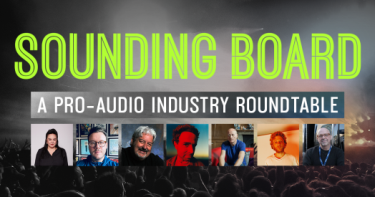
CHICAGO, Jan. 26, 2021 - The professional audio industry spent much of last year pivoting and adapting to the current state of live events. From live-stream concerts to pre-taped performances in artists’ bedrooms, the entire industry was forced to adjust to a new way of working.
To bring the industry together, Shure gathered an all-star panel of guests to offer their own perspective on how the current situation has impacted their professional lives and day-to-day reality. The 90-minute roundtable chat offered unique viewpoints from bands, venues, music labels, and more, including Julie Weir (Sony Records UK, Music for Nations), Adam Thurston (Audiotree, Lincoln Hall, Schubas in Chicago), Glen Rowe (KYOTO Music, Muse), Taylor Goldsmith and Griffin Goldsmith (Dawes), Greg Morrow (Session Drummer), and John Harris (Mixing Engineer).
Moderated by Peter James, Vice President of Global Professional Audio Sales at Shure, the discussion touched upon the positives of 2020 and the steps the industry needs to take to re-open again.
A Pro Audio Renaissance
Regardless of profession, all panelists agreed that there’s been a rebirth of creativity. From writing sessions over Zoom to recording new music to developing platforms to consume the content, the industry has never been more creative.
“People are really desperate for new music,” said Julie Weir of Sony Records. “We had a top ten record in the UK with a heavy metal band because we did an interesting campaign that was all digital and people engaged with. It has taken longer to do smaller things, but I’ve never been more creative because you talk to more people now and there is more collaboration coming through because artists are open to thinking outside the box.”
PreSonus® has released five fan-favorite, retro-inspired effects with the Analog Effects Collection. The collection includes Analog Delay, Analog Chorus, Red Light Distortion, Rotor, and Tricomp®. Each effects plug-in in the collection represents the apex of PreSonus craftsmanship, from State-Space Modeled drive stages with inspiring sonic textures to their classic, vintage-inspired user interfaces. Formerly only available in Studio One® Professional and Artist, these plug-ins are now available via PreSonus Hub in VST3, AU, and AAX format.
Analog Delay is a classic emulation plug-in of an analog BBD delay known for its ability to create a warm delay sound that can range from subtle modulation to spirals down a psychedelic rabbit hole. It also features a State-Space Modeled Drive control to add analog grit to your sound for even more tonal sculpting.

In these times, many of us have found ourselves off the road and unable to perform at live events. While we may have been using this time to sharpen our skills or pursue new interests, for the most part, our audio gear has been silent. As surprising as it may sound, your audio equipment is most vulnerable not while you are using it, but while you are not using it! In order to have gear that will be in perfect shape for your next event and last for years to come, it is important to understand how to take care of it and how to store it safely and responsibly.
After all, you have put significant investments into purchasing it, so you should focus on preserving this investment for as long as possible. Here are a few tips on the basics of keeping audio gear in good shape.
Backup First
Nowadays laptops, hard disks or personal media players are entirely part of most audio systems. Hopefully, before you moved your gear into storage, you made a backup of each device. Either way, now would be a good time to check that your backup is still in good working condition or if you do not have a backup, do it now! Remember – no music, no dance.
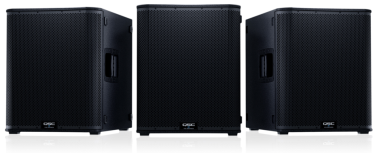
You will have noticed that in a large number of live events, sound engineers place subwoofers close together either on the floor, on the side of the stage, or at the top of the line-array rig. Are there any benefits in doing so, and what exactly happens? Before exploring the answer, let’s first recall some basics of sound.
Sound Wavelength
First, let’s recall the definition of the speed of sound ‘C’ (at sea level, at 21° C / 70° F degrees, under normal atmospheric conditions. It is defined as C = f λ, where ‘f’ represents frequency and ‘λ’ wavelength and it equals to 344 m/s (1128 ft/s).
Now, what is a wavelength? In physics, the wavelength is the spatial period of a periodic wave—the distance over which the wave’s shape repeats. It is the distance between consecutive corresponding points of the same phase on the wave, such as two adjacent crests, troughs, or zero crossings.
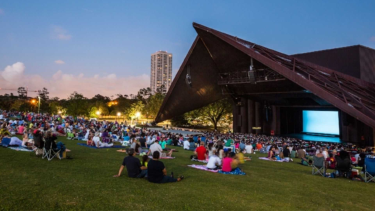
Outdoor events have a host of problems unique to themselves, from permits to being prepared for bad weather. With proper planning you can ensure your event succeeds satisfying not only your client but your attendees as well. These can be lovely, but be forewarned — outdoor events are sometimes much more difficult to organize than indoor events.
Here are some tips on how to plan an outdoor event and to minimize stress:
1. Get a permit
Do this as soon as you’ve finalized where and when you'll have your outdoor event. Do this first. The fastest way to shut down an event is to hold it without a permit.
2. Check up on all ordinances
What are the noise ordinances? Every town has them. Is noise prohibited after a certain time? You should also look into fire and safety codes. The latter may have restrictions on overselling tickets, advertisements, and seating. Talk to the state and local authorities, the local fire department and the police about these.
3. Some outdoor events need more work than others
Is your event being held in an already existing outdoor facility? Great! That cuts your work in half. Otherwise, are you targeting a raw, uncommon area? Then advanced planning and coordination are critical. You can expect to be in charge of everything — power, toilets, communications, equipment, and food, among others. Make arrangements to bring everything to the venue, and taking everything out of the venue after the event is done.
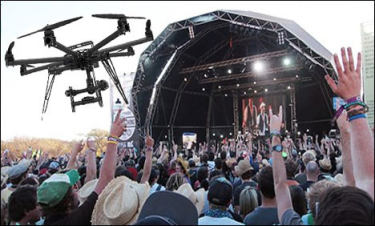
The use of drones at events is becoming more common every day. In fact, drones are one of the hottest event tech trends, and they’re being used in a wide variety of creative ways at all kinds of events. From indoor conferences to outdoor festivals, drones are providing entertainment, advertising, security, and more.
While drones can be an exciting addition to your event, you need to think about your goals before you invest. Fortunately, drones can be very affordable – depending on how you want to use them. As a result, it can be easy to fall into the trap of adding drones to your event just because they’re trendy. The reality is if drones aren’t a strategic element of your event, they can actually distract attendees and do more harm than good.
Of course, there are also a variety of laws you need to be aware of and follow when using drones at events, and those laws change from state to state. Always make sure you hire drone pilots who hold a commercial pilot license to operate unmanned aerial vehicles (UAV) and follow all FAA rules. To give you an idea of some of the rules you’ll need to follow if you use drones at your event, consider these laws:
- Drones flown for commercial purposes (like events where tickets and other things are sold), must be registered by the FAA.
- Drones cannot be flown out of the sight of the pilot.
- Drones cannot be flown above 400 feet.
- Drones cannot be flown within five miles of commercial airspace, national parks, or federal buildings.
The list goes on and on, and as mentioned above, you have to follow state and local rules, too, which can change from one municipality to the next. Do your homework, understand the laws, work with a licensed pilot who understands the rules and your event (and has insurance coverage for liability purposes), and you should be okay.

One of the most important factors to holding a successful event is the venue where the event takes place. The wrong venue could ruin your event while the perfect venue can help your event be as successful as possible. Bottom-line, venue selection matters a lot, and using a venue directory to find the perfect place for each of your events can make the process of finding and choosing venues quick, easy, and reliable.
According to research by EventMB, more than half of event organizers (58.3%) find venues using online search engines. Not only is this process time-consuming, but many of the best venues may not even show up near the top of search engine results pages. The highest rankings typically go to the venues that invested into search engine optimization and other marketing tactics to boost their search rankings. That doesn’t mean they’re the best venue for your event.
To ensure you control your venue search (rather than search engines), you can use a comprehensive venue directory, like the one coming soon from AttendStar, and find the perfect venue without dozens of online searches and endless mouse clicks. A good venue directory instantly shows you all of the details about a venue based on your specific needs and search criteria.
TIPS TO USE A VENUE DIRECTORY TO FIND THE RIGHT EVENT VENUE
THE PRICE SHOULD BE RIGHT – FREE
You shouldn’t have to pay to search a venue directory, and venues shouldn’t have to pay to be listed in directories. The reason is simple. If venues have to pay, then only those with bigger marketing budgets will be included – similar to how the venues with deeper pockets are likely to appear on the first page of search engine results pages. This limits your search and could prevent you from finding the perfect place to hold your event.
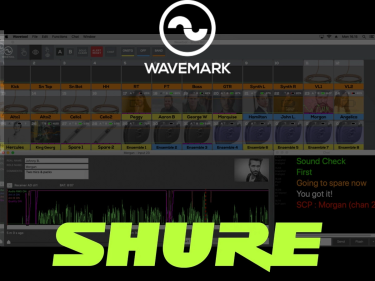
CHICAGO, November 11, 2020 — Shure is strengthening its focus on software solutions by announcing a strategic investment in Finnish software company Ab Wavemark Oy.
Known for its software solutions for theater, broadcast, and content streaming applications such as Wavetool and WTAutomixer, Wavemark has recently expanded its software portfolio into streaming applications. It now offers WTAutomixer, a plug-in enabling seemless auto-mixing for uses like podcasting, remote learning, and house of worship services. WTAutomixer is the first multi-channel gain sharing automixer that can be inserted to almost any DAW as a VST3, AU, or AAX plug-in. WTAutomixer automatically controls the gains of multiple microphones and is ideal for live streams, discussion panels, talk shows, religious services, and for any application that requires the use of multiple microphones. Wavemark software has been used in conjunction with several high-profile theater applications using Shure Axient® Digital Wireless Systems.
Shure’s software offerings, which include Wireless Workbench® for live events, plus Designer, SystemOn, and its new IntelliMix® Room Audio Processing Software for integrated systems, provide customers with a variety of different solutions for audio management.
Featuring a hybrid modular synthesis approach, PreSonus®’ Deep Flight One instrument library for Studio One®’s Presence XT sampler draws on rare and sought-after analog and digital synthesizers and layered field recordings, sweetened with legendary and exotic signal processors, to create a huge range of organic, deep, and inspiring sounds. Use Deep Flight One’s Multi Instrument presets straight up or combine its elements any way you like to create unique instruments and effects.
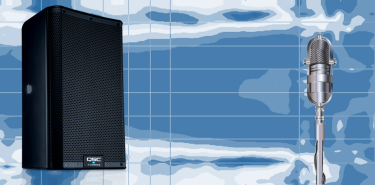
Loudspeakers can be described and specified in a number of different ways, making a buying decision more complicated than it needs to be. Therefore, having some understanding of the jargon used to specify loudspeakers is essential to make sure the product you are buying is the right one for your needs. For passive loudspeakers, the maximum admissible power rating (in watts) is probably the most important parameter to ensure safe operation and good sound quality.
However, with active loudspeakers, which have a different design paradigm, there are several parameters to consider. The aim of this article is to clarify a few of these parameters and explain the relationships between them. In short, watts does not equal sound pressure level. Let’s find out why?
The Meaning of Driver Sensitivity
First, a loudspeaker driver is a transducer that converts an electrical audio signal into sound waves. In a loudspeaker, each individual driver has a set of technical specifications and one of them is called its sensitivity. A drivers’ sensitivity is a measure of the relationship between the power fed to it and the sound output generated (SPL). A driver’s sensitivity is measured in decibels (dB), at one meter (3.3 ft) from the unit, by feeding it one watt (2.83 volts for a driver with an 8 ohm impedance) of electrical energy. As an example the specification could read 87 dB (1w/1m). Sensitivities of different drivers can be compared because the audio industry has established the above measurement standard.
The higher the sensitivity rating of a driver, the louder it will play with a certain amount of input power (wattage). Sensitivity measurements of 88 dB (1w/1m) are about average and anything below 84 dB (1w/1m) is considered poor. Sensitivity equal or higher than 92 dB (1w/1m) are sought after.
Let’s recall here also that in order to increase the output of a driver by 3 dB you will need to double the amplifier power. To increase the output by 6 dB, you will need to increase the power by a factor of four, etc. For example, if a driver has a sensitivity of around 88 dB (1w/1m), you will need two watts to obtain 91 dB at 1 meter.
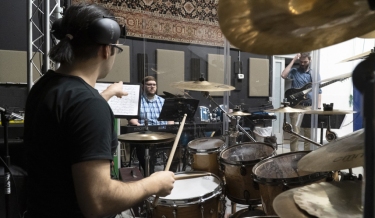
“With TouchMix, nobody needs 45 minutes to get set up anymore, and for bands to spend more of their paid time playing means I have more satisfied customers.”
Saint Louis Park, MN (November 17, 2020) — [Fr, De, Es] — Taylor Sound is a full-service studio serving musicians in the Minneapolis–Saint Paul metropolitan area. Located just west of Minneapolis, the complex features rehearsal rooms, on-site recording, and even music video production in a massive, green-screen-equipped room. Facilities manager T. Perry Bowers wanted to increase access for local bands and artists who lacked the budget to lock out a rehearsal space of their own, so he created the Band Share program, in which bands pay for one or two nights per week in a room equipped with a drum kit, backline, and P.A. For the latter, he chose QSC TouchMix-8 and TouchMix-16 touchscreen digital mixers as well as the full range of QSC K.2 Series active loudspeakers.
“All three of our Band Share rooms are bookable online, and you can get an access code and come in without ever talking to a human being in person,” explains Bowers. “Room A, the smallest, is good for a trio or quartet, and contains a TouchMix-8 digital mixer and K8.2 series loudspeakers. Room B has a TouchMix-8 and pair of K10.2. In room C, the largest, we have the TouchMix-16 and four K12.2s. All of the loudspeakers are set up as main PA monitors, though sometimes bands move them because they want to practice as if they’re onstage.”
In celebration of their 25th anniversary, PreSonus® announced the new River City Sessions performance series. The online series features artists performing in PreSonus’ world-class, Roger Storyk-designed River City Studio at PreSonus HQ in Baton Rouge, Louisiana. The first episode debuted today, featuring Justin Garner, as recorded by Eric Welch.
The monthly, genre-agnostic online series will feature hand-picked up-and-coming artists from Louisiana and beyond, offering them a chance to record a few songs and a video in exceptional fidelity—for free. Each episode is intended to capture the live, performative spirit of the artists, with minimal attention to overdubs, layering, etc.
Each performance concludes with a brief Q&A with each session’s engineer about the recording techniques and creative approach employed. Like the featured artists, engineers will be different with every episode.
“This is something we’ve wanted to do for a long time,” said Wesley DeVore, PreSonus’ Product Marketing Manager. “Independent artists are the lifeblood of PreSonus. The River City Sessions give us a chance to support the kind of musicians that help build our company and share their work with a global audience.”
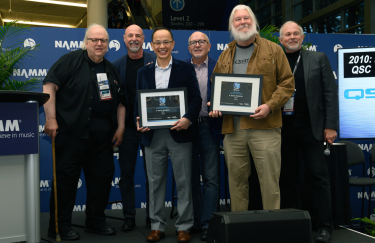
“The K Series established QSC as a leader in active loudspeakers.”
COSTA MESA, CA (January 22, 2020) — QSC is proud to announce that K Series active loudspeakers have been inducted into the TECnology Hall of Fame at the 2020 Winter NAMM Show in Anaheim, California. Founded in 2004 by former Mix magazine editor George Petersen, the TECnology Hall of Fame honors and recognizes audio products that have made a significant contribution to the advancement of recording, live sound, and audio technology. To be eligible for consideration, products must have been on the market for at least ten years.
Launched in 2009, the QSC K Series sported a best-in-class 1,000 watts of extremely clean amplification in an ABS enclosure that combined a 1.75-inch compression tweeter with either an 8-, 10-, or 12-inch woofer. A dual-12-inch KSub active subwoofer completed the line. The K Series remarkably delivered both studio-quality sound as well as powerful and even coverage at a then unheard-of light physical weight. Along with its other groundbreaking features such as Directivity Matched Transition (DMT), Intrinsic Correction Tilt-Direct pole cup and versatile DSP Presets, K Series made its mark as having raised the bar for what performers and live sound professionals should expect from an active loudspeaker. More recently, the company released the QSC K.2 Series, further demonstrating the company’s commitment to maintaining its dominance in the category.
“At the launch of K Series, QSC was already at the forefront of audio technology, widely accepted and appreciated as a manufacturer of high-quality, high-performance amplifiers and processors,” says Ray Van Straten, Senior Director of Marketing at QSC. “But it was the K Series that not only put us on the map as a loudspeaker manufacturer, but truly established QSC as a global leader. The fact that NAMM and the TECnology Hall of Fame are validating that legacy is incredibly gratifying to the many talented people and teams at QSC who brought this product to market, as well as our channel partners and customers worldwide who, to this day, place their trust in us to provide quality, professional solutions that deliver great experiences.”
A quarter century ago, two former high school and LSU School of Engineering classmates were inspired to found a new company called PreSonus®, where they would design innovative audio products with professional sound quality and features without sacrificing affordability. Working in a borrowed garage space in Baton Rouge, Louisiana, Berklee-trained guitarist, producer, and audio engineer Jim Odom and fellow engineer (currently Vice President of Manufacturing) Brian Smith started by creating the DCP-8, which was the first product to offer digital control over analog audio circuits—a design PreSonus patented in 1995.
“At the time we designed our DCP-8, other options were esoteric gear costing tens of thousands of dollars,” recalls Odom, now the company’s President and Chief Strategy Officer. “We were recording and wanted the same equipment as the big studios but we couldn’t afford it, so we built our own, starting PreSonus with three employees and an output of five or six units a week. Then and now, our philosophy has been to design products that people can afford.”
Although the DCP-8 had reasonable success, Odom observes, “it missed on some features the customers really wanted. We were close but had to listen more closely to our customers. It was an enormous lesson for me as a product designer. Our second version, the ACP88, was a tremendous success.”
Lesson learned: Listening to customers has been a key part of PreSonus’ product development ever since. To this day, many of the company’s best product designs and updates have been based on customer feedback.
Over the following 25 years, PreSonus went on to create a steady succession of breakthrough products. Odom and Smith introduced such innovative products as DigiMax (2000), the first 8-channel microphone preamplifier with ADAT Lightpipe output; Central Station (2004), the first monitor controller with talkback; and some of the first multi-channel FireWire interfaces, including the FirePod (2004) and FireStudio series.
Page 1 of 23